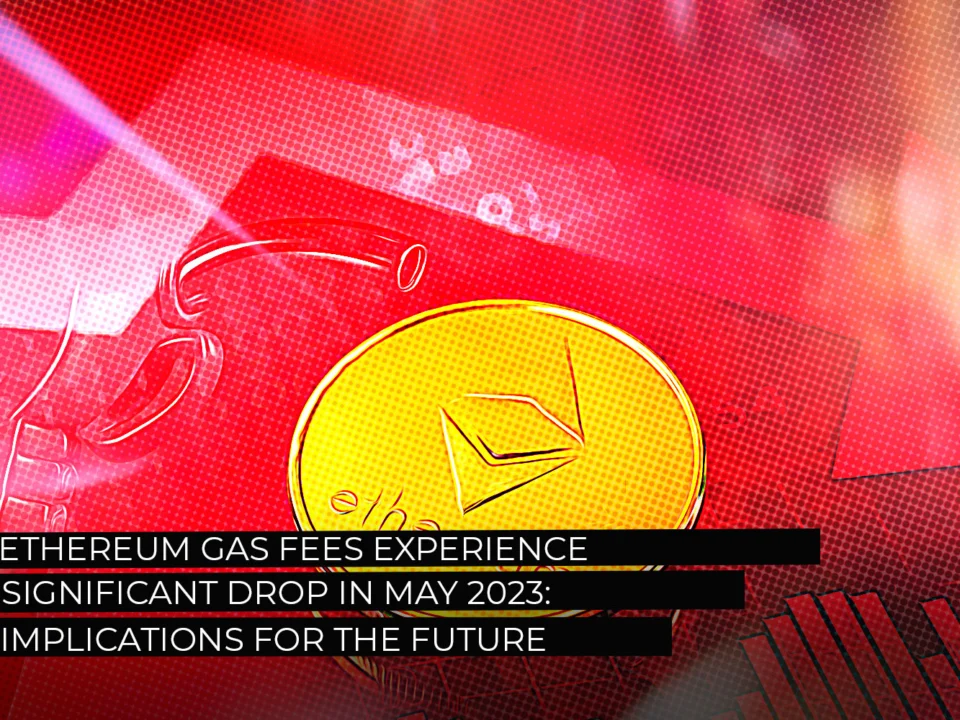Ethereum gas fees experienced a remarkable decrease in May 2023, bringing much-needed relief to users and developers. This decline marks a pivotal moment for the Ethereum ecosystem, potentially influencing transaction costs and network activity. Lower gas fees can democratize access to decentralized applications, fostering innovation and inclusivity. As we examine the factors behind this reduction, it is crucial to consider its long-term impacts and whether this trend will persist. Understanding these dynamics will shape our expectations for the future of Ethereum and its role in the broader blockchain landscape.
What Prompted the Decrease in Ethereum Gas Fees?

The substantial decrease in gas fees observed in May 2023 can be attributed to several key factors:
1. Network Upgrades
- Ethereum Improvement Proposal (EIP) 1559: Implemented upgrades like EIP-1559 have optimized transaction fees, making them more predictable and reducing overall costs.
- Transition to Ethereum 2.0: The ongoing shift to Ethereum 2.0 has enhanced scalability, decreasing congestion and consequently lowering gas fees.
2. Increased Efficiency
- Layer 2 Solutions: The adoption of Layer 2 technologies, such as Optimistic Rollups and zk-Rollups, has offloaded many transactions from the main Ethereum chain, reducing gas fees.
- Improved Smart Contracts: Developers have refined smart contract codes to be more efficient, further easing network load.
3. Market Dynamics
- Decreased Network Demand: A temporary reduction in market activity has contributed to lower transaction volumes, thus lessening the demand for network resources.
- Economic Incentives: Various economic policies and incentives aimed at minimizing transaction costs have also played a vital role.
Together, these factors have caused a noticeable drop in gas fees, making Ethereum more accessible and affordable for users and developers alike.
How Lower Gas Fees Affect the Ethereum Ecosystem
The recent decline in gas fees has significant implications for the Ethereum ecosystem. Lower gas fees can drive several positive changes:
- Increased Transaction Volume: Lower costs encourage more users to engage in transactions, leading to higher overall activity on the Ethereum network.
- Enhanced Accessibility: Reduced gas fees make it more affordable for everyday users and small-scale developers to participate, democratizing access to blockchain technology.
- DeFi Expansion: The decentralized finance (DeFi) sector, heavily reliant on Ethereum, benefits immensely as lower fees facilitate more cost-effective smart contract execution.
- NFT Growth: Non-fungible token (NFT) marketplaces will see increased participation, as lower gas fees reduce the financial barrier for minting and trading NFTs.
| Impact | Description |
|---|---|
| Transaction Volume | More users can afford to transact, leading to higher network activity. |
| Accessibility | Low costs enable broader access for both users and developers. |
| DeFi Growth | Cost-effective smart contracts boost the DeFi ecosystem. |
| NFT Market | Lower gas fees make minting and trading NFTs more affordable, promoting growth. |
In summary, lower gas fees can lead to a more vibrant and accessible Ethereum ecosystem, fostering innovation and widespread adoption.
Future Projections: Will Ethereum Gas Fees Remain Low?
The recent drop in Ethereum gas fees has generated a buzz in the cryptocurrency community. However, the critical question remains: will these lower gas fees persist?
Several factors could influence the future of gas fees:
- Ethereum 2.0 Upgrade: The ongoing upgrade to Ethereum 2.0 promises enhanced scalability and efficiency. If successful, it could maintain or even further reduce gas fees.
- Layer 2 Solutions: Layer 2 technologies, such as Rollups and Plasma, aim to handle more transactions off the main chain, thereby decreasing congestion and gas fees.
- Market Demand: Gas fees fluctuate with network demand. An increase in decentralized applications (dApps) or a new wave of non-fungible tokens (NFTs) could drive fees higher again.
- Regulatory Developments: Government policies and regulations on crypto transactions could impact network usage and subsequently gas fees.
Comparative Table: Factors Influencing Future Gas Fees
| Factor | Potential Impact on Gas Fees |
|---|---|
| Ethereum 2.0 | Likely reduction |
| Layer 2 Solutions | Decrease expected |
| Market Demand | Increase or Decrease |
| Regulatory Changes | Uncertain |
In conclusion, while the current trend is optimistic, predicting the future of Ethereum gas fees involves several variables. Keeping an eye on technological advancements and market dynamics will be crucial.
Frequently Asked Questions
What are Ethereum gas fees?
Ethereum gas fees are the costs required to conduct transactions or execute smart contracts on the Ethereum blockchain. These fees are used to compensate miners for the computational power they provide to validate and record these transactions.
Why did Ethereum gas fees drop significantly in May 2023?
In May 2023, Ethereum gas fees experienced a notable decline due to several factors. These included an overall reduction in network congestion, improvements in the efficiency of the Ethereum network, and an increase in the adoption of scaling solutions like Layer 2 technologies. These changes collectively contributed to a decrease in the cost of executing transactions and contracts.
What are the implications of lower gas fees for the Ethereum network?
Lower gas fees have several positive implications for the Ethereum network. They make Ethereum more accessible to a wider range of users and developers by reducing the cost barrier associated with transactions. This can lead to an increase in the use of decentralized applications (dApps) and smart contracts, fostering more innovation and adoption within the ecosystem. Additionally, it can encourage more frequent transactions and interactions on the chain, contributing to the network’s overall growth and vitality.
How might the future of Ethereum be affected by this decrease in gas fees?
The decrease in gas fees could have a profound impact on the future of Ethereum. Reduced transaction costs can enhance the appeal of Ethereum for both institutional and individual users, potentially increasing its market share and cementing its position as a leading blockchain platform. Furthermore, it may accelerate the growth of various sectors within the Ethereum ecosystem, such as decentralized finance (DeFi), non-fungible tokens (NFTs), and other blockchain-based innovations. Overall, sustainable low gas fees could lead to greater scalability and long-term success for the Ethereum network.







